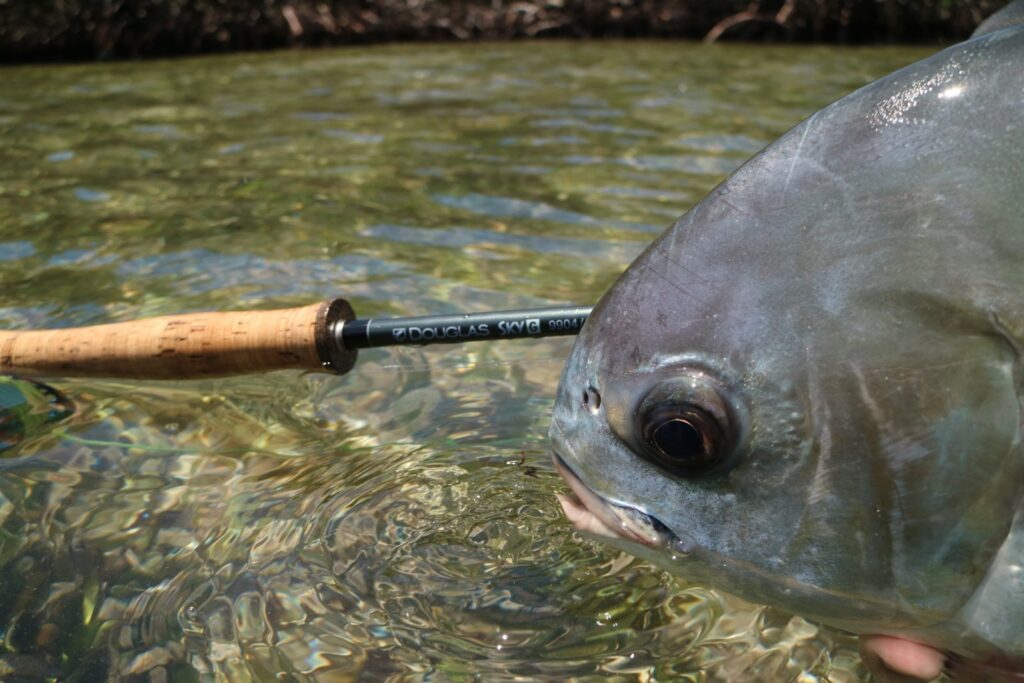Noah Studdard, April 2025
The eastern coast of Central America is home to some of the best habitats in the Western Hemisphere for targeting many highly sought-after flats species on the fly. Nestled along this coast is the small country of Belize. Fifty miles offshore, stretching more than 170 miles from north to south, you will find the second-largest living barrier reef on Earth. Everywhere from this reef to the mainland is a playground for any angler with a fly rod. With vast habitats ranging from hard coral flats crawling with permit and bonefish to freshwater rivers and brackish lagoons holding tarpon and snook, there is no shortage of opportunity for any angler to try their hand at fly fishing.
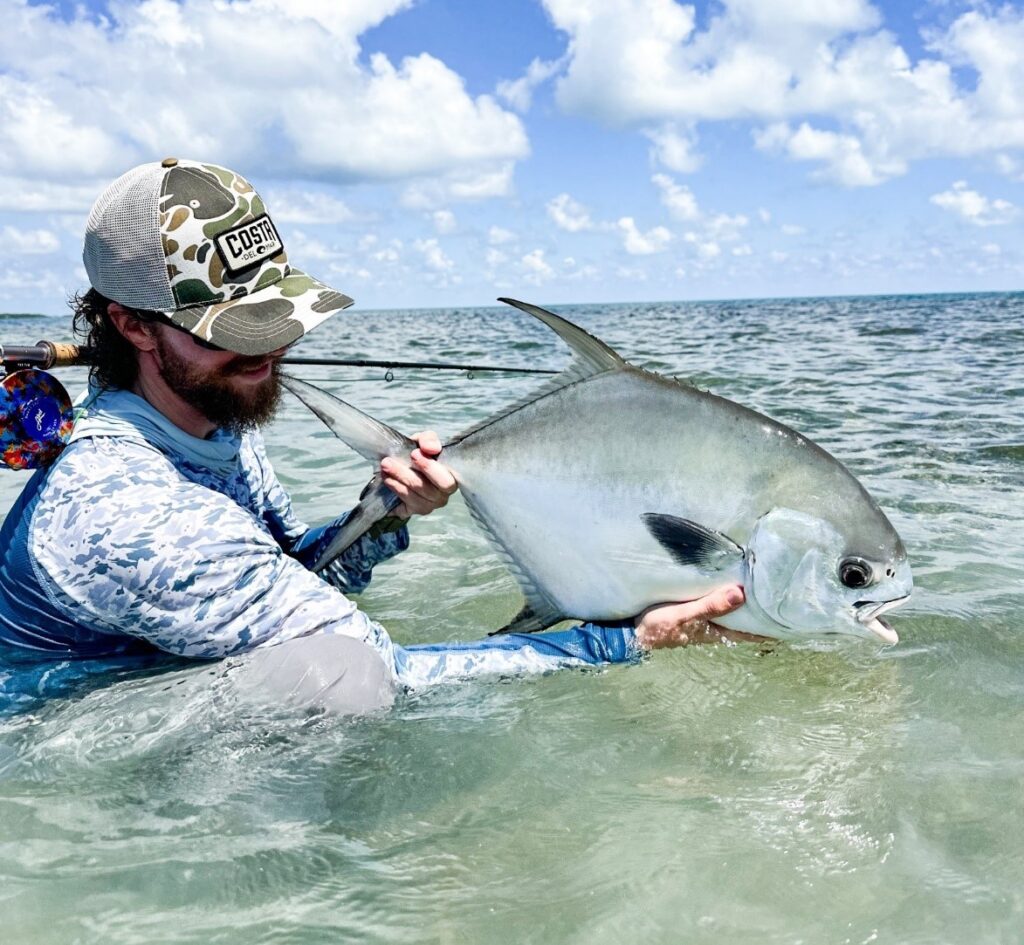
Target Species
Permit – The Ultimate Challenge
Known as the “Holy Grail” of fly fishing, permit is famous for their picky eating habits and keen senses. They are opportunistic feeders, meaning they rarely go out of their way for food. Not only must you present a well-placed fly, but you must put it in their face—without spooking them. This can be a daunting task when faced with high winds, poor visibility, or both. One may bring them a beautiful meal on a silver platter, and 99 times out of 100, it still may not be good enough.
Permit can see you, hear you, and some might even say they can sense you. Too many false casts, and you’re busted. Let your fly land too abruptly on the surface, and they’ll spook. Drop a water bottle in the boat while you’re in their zone, and you might as well try another flat for a while.
These spooky fish feed primarily on the high tide, as they can more efficiently maneuver around the shallow flats and coral heads where their key food sources, such as crabs and shrimp, reside.
Another factor to consider when targeting permit fish is the moon phase. Like many predatory fish, if permit can see their food, they will eat—day or night. During a full moon, the fish often feed throughout the night, making them even pickier during the daylight hours. While you cannot control the weather or tides, you can increase your odds of success by choosing to target these fish when there is little to no moon.
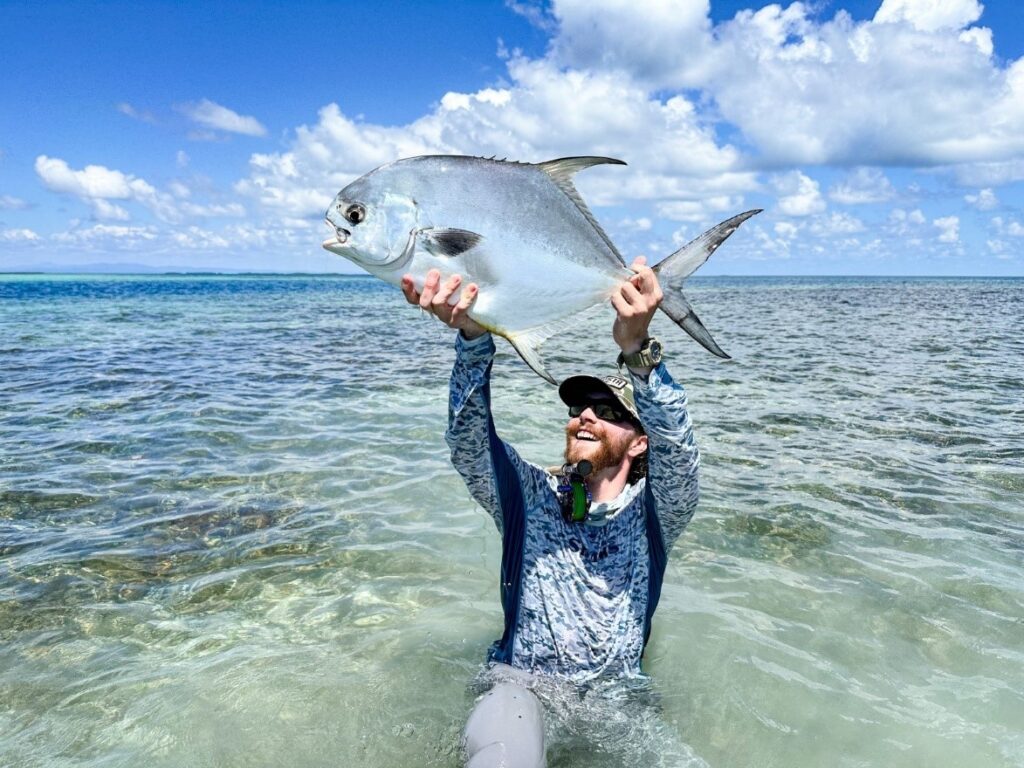
Tarpon – The “Silver King”
Known for their aggressive strikes and acrobatic performances, tarpon can be found in many different habitats throughout Belize. From freshwater rivers winding through the jungle to the same flats where you chase permit, tarpon is always somewhere around if you’re in the water.
Some resident tarpon fish can be found year-round in certain estuaries throughout Belize, but the prime months for targeting this species are April and May. During these months, tarpon migrated in large schools, and their numbers significantly increase.
Early mornings and late evenings are often the most productive times for targeting tarpon, as they tend to be more active in feeding during these hours. You will often see them break the surface of the water in what is known as a “roll,” where the fish comes up for a big gulp of air. This breath of fresh air helps the fish adjust their buoyancy and allows anglers to catch a quick glimpse of the Silver King.
When you can spot rolling fish, you can focus your time and efforts on the correct locations to increase your chances of success.
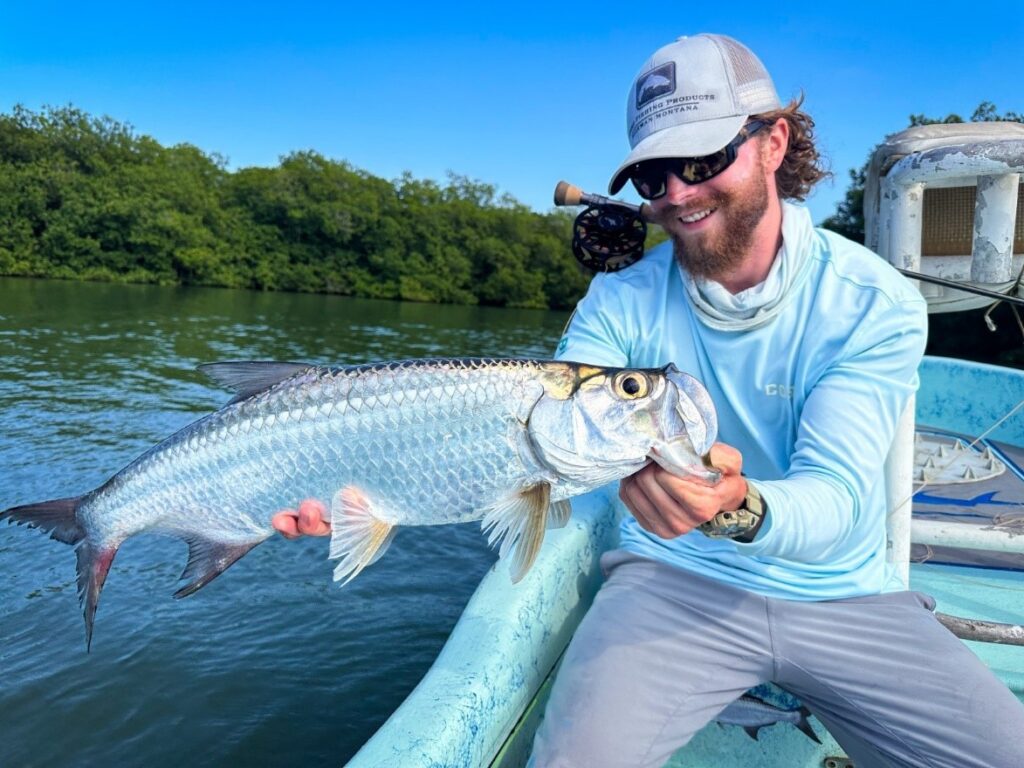
Bonefish – The Ghost of the Flats
With drag-screaming runs and often highly visual eats, bonefish are a perfect species to target on the saltwater flats with a fly rod.
Bonefish can be found everywhere in the salt and brackish water of Belize and are often seen traveling in large schools. Finding these schools greatly increases the chances of getting one to eat your fly, as the fish compete for food.
With healthy populations throughout Belize, bonefish are a great introduction to saltwater fly fishing. Imperative factors in all types of saltwater fly fishing include spotting the fish, casting with great accuracy, and setting the hook with a firm “strip set” as opposed to a normal “trout set.” All these skills can be honed through targeting bonefish, and the vast number of them in Belize provides ample opportunity to do so.
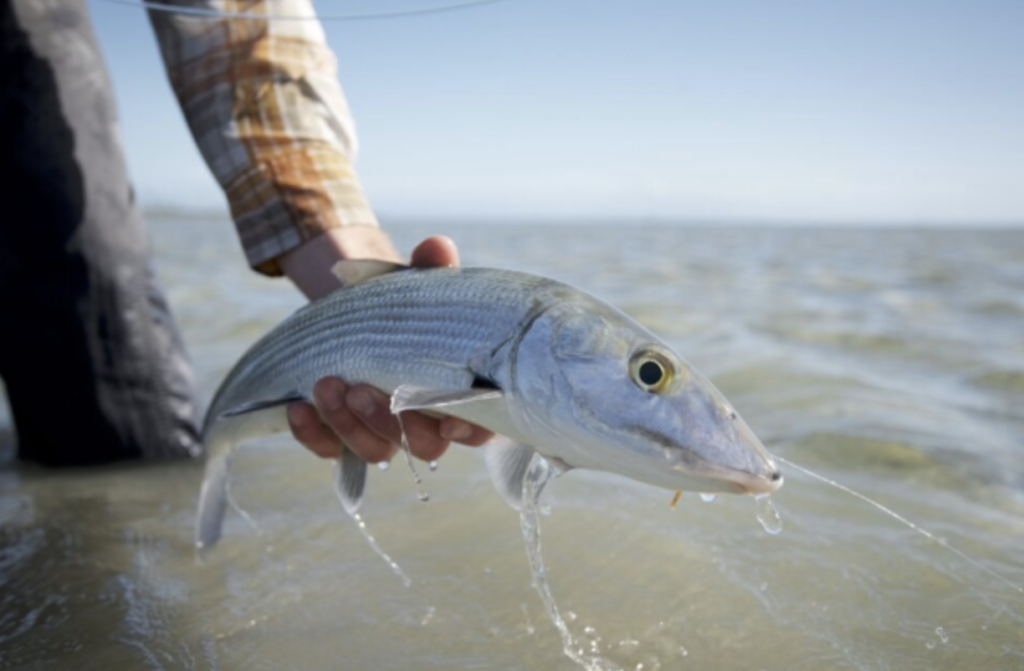
Best Time to Visit for Fly Fishing
As with many fisheries, spring and summer are typically the prime seasons to visit Belize for fishing, with peak season beginning in March and running through August. Migratory tarpon begins showing up in larger numbers around April, and the spring months often bring more consistent weather.
With an average temperature of 79°F, Belize is also a great place to escape the cold during the winter months of December through February. One thing to be mindful of during this period is the weather. While you may be able to take advantage of off-season rates with some guides and resorts, December and January can bring rain and overcast conditions. However, on days with ideal conditions—good light, good tides, low wind—you can often find great fly fishing opportunities and very unpressured fish. It’s a gamble that everyone must decide whether they’re willing to take.
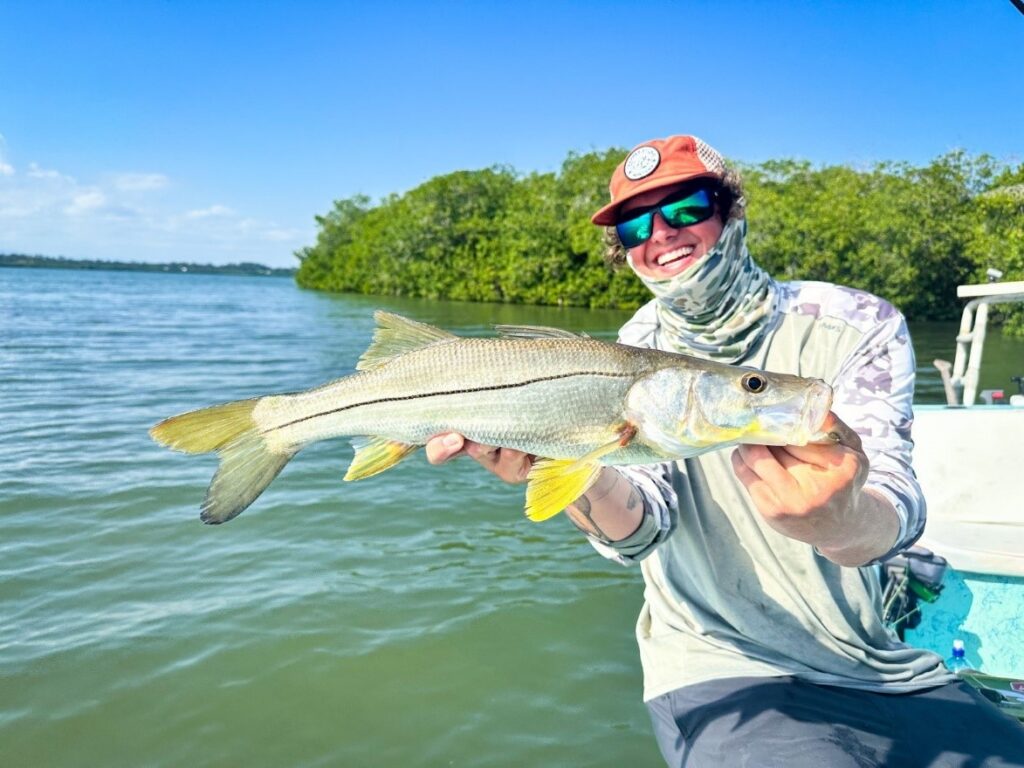
Recommended Gear / Tips & Techniques
Permit – The “Holy Grail”
- 12’ – 16 lb. leaders
- 16 lb. tippet
- Size 4 & 6 flies (crab & shrimp imitations)
Tarpon – The “Silver King”
- 9’ – 30-40 lb. leaders
- 60-80 lb. shock tippet
- Size 2 & 4/0 flies (baitfish & large shrimp imitations)
Bonefish – The “Ghost of the Flats”
- 10-12’ 12 lb. leaders
- 10-12 lb. tippet
- Size 4, 6, & 8 flies (crab & shrimp imitations)
Other Gear To Consider
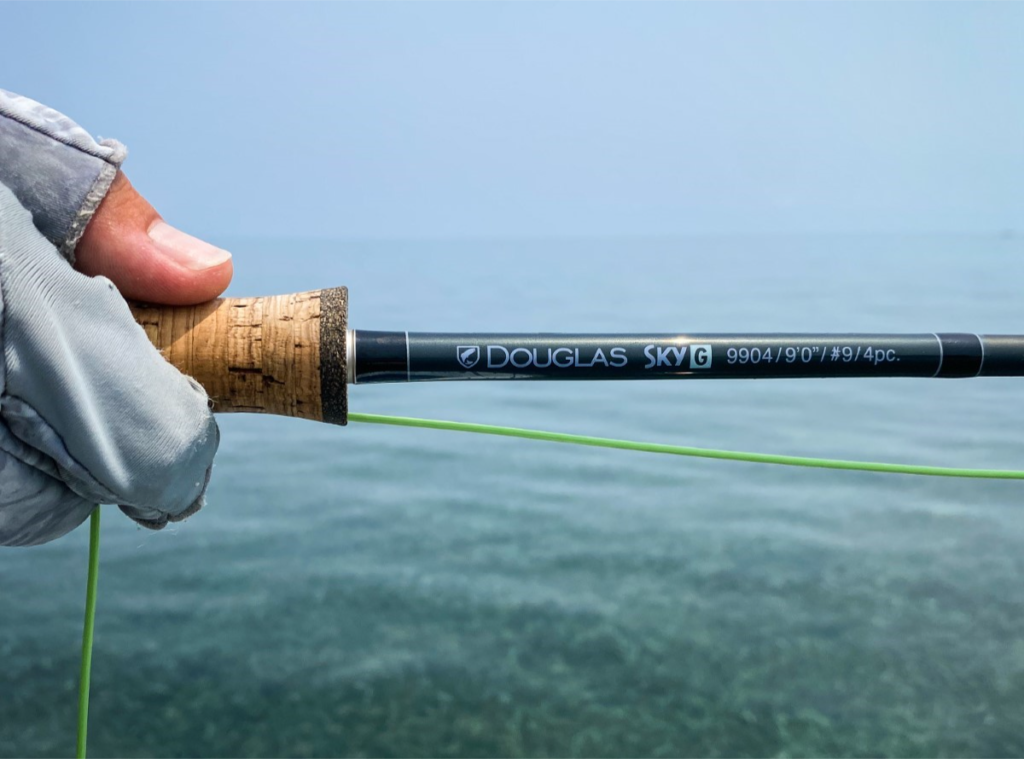
Guided vs. DIY Throughout Belize
Many lodges, islands, and resorts throughout Belize offer the option to wade right out your back door and onto sandy flats in pursuit of fish on your own. Some places provide kayaks or stand-up paddle boards to venture even further, while others may allow you to access various areas on foot. These places will likely also have access to, or personally know, local guides with years of fly fishing expertise. Ultimately, the choice to fish with a guide or on your own is yours. Here are a few pros and cons to consider when making your plans.
Exploring new areas on your own can be a lot of fun and provide great opportunities to practice skills such as spotting fish, getting into position, casting in the wind, and more.
That said, one thing that can help develop these skills more efficiently is learning from someone who knows the area and the fishery like it’s their home—because it is.
Local guides often have knowledge and experience of their home waters that would take decades for someone unfamiliar with the area to master. From spotting fish and knowing which fly patterns work to simply being aware of areas where fish have been active recently, fishing with a local guide is usually a good investment.
Guides know where the fish live, when they will show up in certain areas, the best angles to approach for spotting, and much more. They can also utilize their boats, accessing areas that would otherwise be impossible to reach. This significantly broadens the area you can fish, thereby increasing your chances of success.
One of the many beautiful things about Belize is that you don’t have to choose just one! If you’re torn between hiring a guide for a full week or fly fishing on your own the entire time, you can always opt to fish with a guide for a few days and then on your own for a few days. This way, you’ll become more knowledgeable about where to look for fish, what times of the day to focus on certain areas, and which flies to use for specific species.
